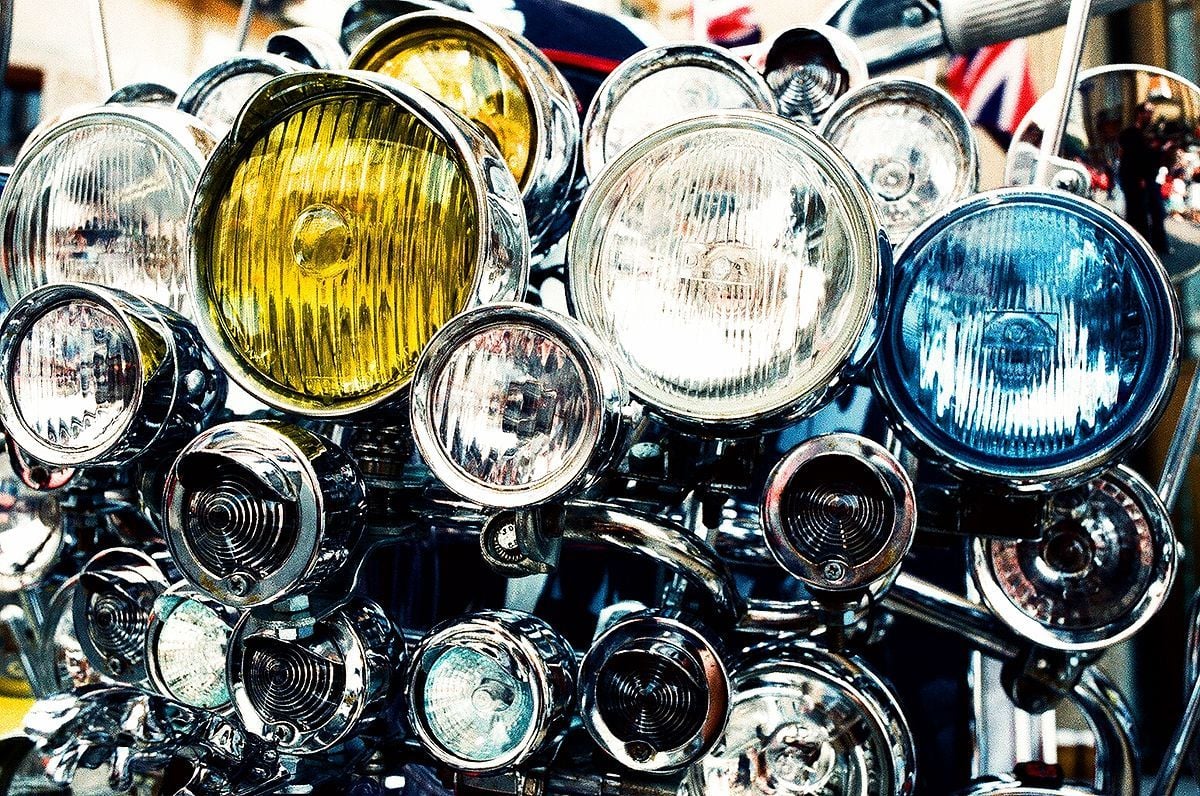From Lamps to Lasers: The History behind Headlights

The implementation of headlights on cars has developed over the span of a little more than a century, but, the technology has traveled more miles than you can count! Today, we think of headlights as contributing to the overall design and sleek look of our vehicles. Before headlights were customizable accessory/safety features on an automobile, they were little fires attempting to light the road.
Here is a brief history of the evolution of headlights:
1880 – 1900: Acetylene
Your option for lighting the road at night in your automobile was once an oil-fueled lamp. When the acetylene lamp came along, it was quickly implemented as a better choice for providing light. Acetylene lamps were more resistant to nasty weather than any admirable attempts a passenger may have made to keep an oil lamp burning! Acetylene lamps were typically mounted with a mirror behind the flame to direct the light forward. As you can imagine, smoke and mirrors don’t make for the most focused beam of light. Acetylene lamps are best for exploring caves where you want your light to spread out to better assist your periphery vision. For driving, acetylene light filters out into the dark night sky leaving little behind to help a driver see what or who is on the road.
1900 – 1912: Electric
It took longer than you might imagine for electric lights to really catch on. The progress was slowed by the difficulty to manufacture a dynamo small enough to fit on a car and, yet, big enough to adequately light the road. The first company to succeed was Peerless in 1904. Peerless was followed by Pockley Automobile Electric Lighting Syndicate who offered a complete set of electrically-powered lights including headlights, sidelights, and rear-lights. They used an 8-volt battery to power their new products. Cadillac was the first company to integrate the headlights into the ignition system in 1912.
1939 – 1962: Sealed Beam
By 1939, manufacturers made use of a parabolic reflector (which is a curved mirror), a filament, and a lens all sealed together to create the sealed beam headlight. The light from this new headlight was more focused in a straight beam out away from the car and onto the road. Unfortunately, the light was faint for the amount of power required to function. The original tungsten filament would sometimes boil and leave dark marks on the glass further inhibiting the passage of light. Europe led the charge in developing the first vehicle-mounted halogen lamp in 1962. Because of the chemical reaction between tungsten and halogen gas, these lights were brighter, caused less damage, and lasted longer.
Early 2000s: High Intensity Discharge (HID) lights
HIDs produce brighter light and consume a lot less power than halogen lights. The light HIDs produce occurs by creating an electrical arc between two metal electrodes through an inert gas inside a bulb. While the brightness is astounding, fitting HIDs into a traditional light assembly scatters light causing an issue known as “dazzling” when you obstruct the vision of oncoming traffic with a blinding light. Using HIDs requires a specific configuration to ensure the light source is appropriately focused.
2004: Light-emitting diodes (LEDs)
The first LED lights were used in the Audi A8’s daytime running light (DRL) assembly. These lights are long-lasting and consume little energy to produce an excellently bright stream of light. The Lexus LS 600h was the first car to use LED low beams in 2006. By the following year, the V10 Audi R8 was the first car completely outfitted from front to rear in LED lights. This was made possible with the modification of using 25 LEDs in each headlight with adaptable settings to dim individual diodes as required to avoid blinding other drivers.
Today: Lasers
BMW introduced laser beam technology for manufacturing headlights. Three diodes emit a blue laser into a prism to focus the lights into one beam. The light travels through a lens which changes the blue to white before reflecting out onto the roads. Laser beams are able to emit light out to approximately1.25 miles. Video technology assists with adjusting the settings to avoid dazzling other motorists.
The headlights you see on cars today evolved from humble beginnings to provide optimal brightness without draining a lot of fuel. From acetylene lamps to lasers, manufacturers have made great strides to help us navigate dark roads while sharing the roads with an ever-growing population.



 Facebook
Facebook
 Twitter
Twitter
 Instagram
Instagram
 Youtube
Youtube





